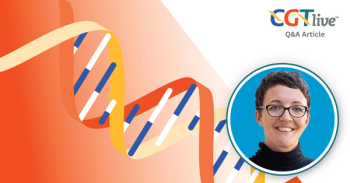
Setting the Stage for Engineered B-Cell Therapies in Cancer and Autoimmune Disease
David Rawlings, MD, the director of the Center for Immunity and Immunotherapies at Seattle Children's Research Institute, discussed findings from several preclinical studies that could help push engineered B-cell therapies towards clinical trials.
Initial efforts in engineered cell therapy approaches to treating indications within cancer and autoimmune disease have largely used T-cells as a starting point. Although some of these T-cell approaches have proved very effective, many investigators are now exploring the potential of engineering other blood cell types to address remaining unmet needs and work around some of the limitations of engineered T-cell therapies.
The lab of David Rawlings, MD, the director of the Center for Immunity and Immunotherapies at
Shortly after the conference, CGTLive™ spoke with Rawlings about their key findings, which included the development of B-cells engineered to secrete therapeutic proteins over a long period of time.
CGTLive: Can you give an overview of the 2 cell therapy platforms your lab is working on?
David Rawlings, MD: We presented work from my laboratory and others in our center where we're making advances on 2 new cell therapy platforms that are different than what most people are familiar with in the field. One is making engineered B-cells that can secrete therapeutic proteins and the other is engineering T-cells in a way that they become regulatory T-cells so that we can use them to treat autoimmune disorders.
In both of these platforms, we use gene-editing to introduce gene cassettes into different loci in in these cells. A lot of our technology is based upon efficient homology-directed, repair-based gene-editing to knock-in expression cassettes into cells.
In the B-cell platform, the focus is to take naive B-cells from a from a patient and then activate those cells in a way that they ultimately differentiate into plasma B-cells, which are the long-lived B-cell subset that makes antibodies. Most of those cells move to the bone marrow and live very long-term in the bone marrow, so this is a platform where if you can have these cells expressing a therapeutic protein, it could last for decades potentially.
The other major advantage of the plasma B-cell is that it makes a vast amount of protein. It's designed to pump out antibodies in response to infection. We're taking that capability of the cell and engineering it to make something therapeutic that we can utilize.
What key data on the B-cell platform did you present at ASGCT?
There were 2 advances in the B-cell platform that were described at the meeting. One, we've begun to look at use of these cells in cancer therapeutics, where we'veengineered B-cells to make bispecific T-engager proteins or bytes.
The other work that was presented at the meeting related to the B-cell platform is a technology where we can understand how these cells work better. One of the things that we haven't been able to do is to link the genetic information (like the RNA sequence) in an individual cell to the amount of protein that an individual cell can secrete, so we took advantage of nano-technology where we can encapsulate a single cell at a time in a nano-capsule and then simultaneously measure the secretion of a protein and the transcriptional activity of that cell by single-cell RNA sequencing. We call this sec-seq (secretion sequencing combination) where we get that information uniquely from individual cells.
The key advance here is that with that capability, we then can optimize our gene-engineering technology to identify what are the ways to make the cell make the most amount of protein per engineering step. We can use this then to look at our products and make them the most effective possible protein secretors.
Beyond the work done in our lab, there was also a really important study that was presented by the biotech company that we spun out called Be Biopharma. They demonstrated that using similar technologies that we use with human B-cells, that they can make plasma B-cells from a primate, and they showed that those cells can engraft in a primate and move and engraft into the bone marrow space without any conditioning. That's a proof-of-concept that, ultimately, we'll be able to make a cell therapy that could be engrafted into a host without any conditioning and provide this therapeutic protein-secretion platform. Those are major advances towards moving this into clinical application.
This transcript has been edited for clarity.
REFERENCE
Seattle Children’s Researchers Share Progress at American Society of Gene and Cell Therapy Annual Meeting. Website. Seattle Children’s Research Institute. Accessed October 12, 2023. https://www.seattlechildrens.org/research/featured-research/asgct-2023/
Newsletter
Stay at the forefront of cutting-edge science with CGT—your direct line to expert insights, breakthrough data, and real-time coverage of the latest advancements in cell and gene therapy.































